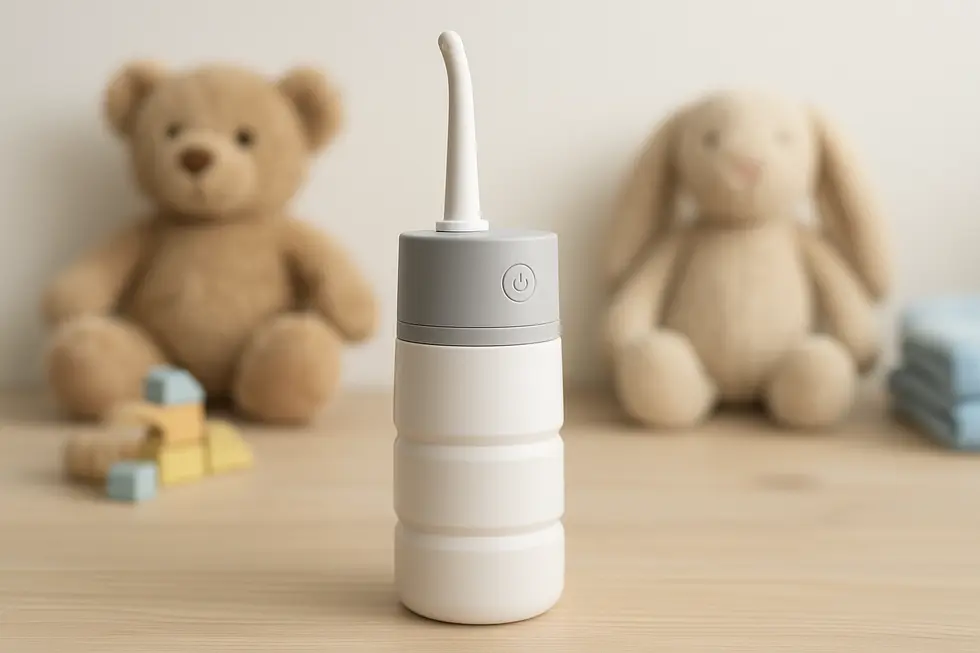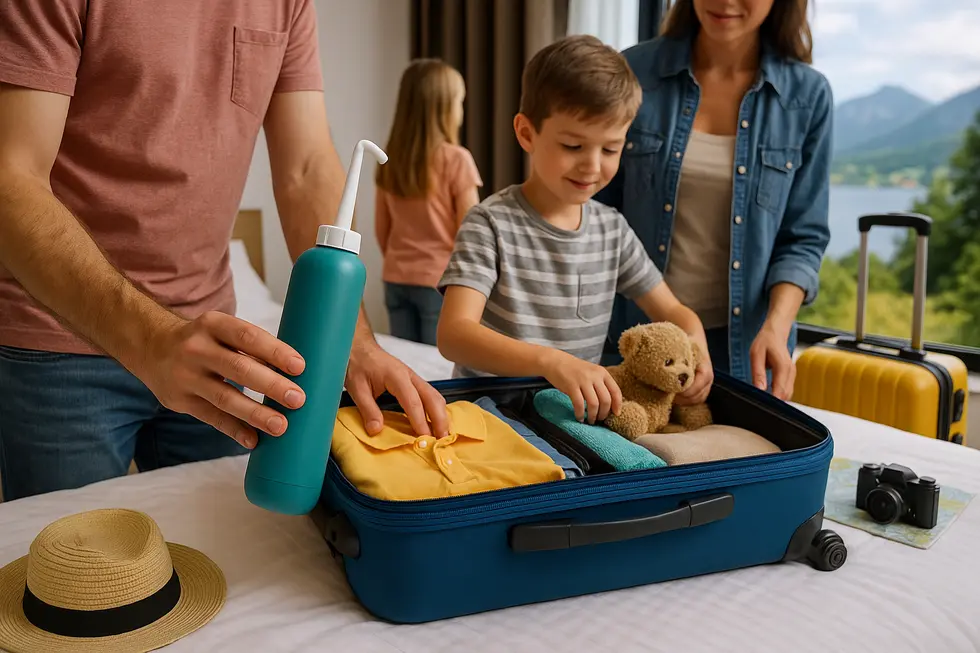Portable Bidet
The Convenience and Cleanliness of Travel Bidets for Family Use
Travel bidets are revolutionizing personal hygiene for families on the go. Offering an eco-friendly and thorough cleaning experience, these portable devices ensure cleanliness whether traveling across town or the globe. Technological innovations, eco-friendly benefits, and evolving consumer trends make travel bidets appealing, ensuring comfort and hygiene for all family members. This article delves into the technological advancements, environmental contributions, and market trends driving their adoption.
Pocket-Sized Smart Clean: How Cutting-Edge Tech Is Reinventing the Travel Bidet

Water-filled squeeze bottles once defined the portable bidet, yet recent engineering leaps have turned that simple gadget into a pocket-sized hygiene hub brimming with smart features. Designers started by miniaturising pumps; today’s micro-brushless motors deliver a steady spray without bulky hardware, so even a palm-sized unit can rival the pressure of full-size bathroom models. Infrared sensors then removed the need to fumble for buttons in a cramped airplane cubicle—hold the nozzle near skin and water flows automatically, preserving cleanliness and conserving battery power.
From manual squeeze to microchips
Hygiene has been elevated further through germicidal UV LEDs built into retractable nozzles. A 30-second blue glow after each rinse neutralises lingering microbes, meaning the device can be stowed immediately without fear of cross-contamination. Developers pair the LEDs with antibacterial coatings that resist biofilm, extending a unit’s life well beyond its warranty. For eco-minded travellers, dual-pressure logic chips now meter water precisely: a soft mist for sensitive skin, a stronger stream for post-workout grit, each using only a few ounces of water.
Comfort hasn’t been forgotten. Thin-film heaters warm the reservoir in seconds, soothing users facing chilly mountain mornings. Battery management systems balance that heat with efficiency, squeezing several dozen cycles from a single USB charge. Some premium models tuck health sensors beside the spray port; by sampling urine splashback they offer instant hydration cues or glucose flags through a companion app—powerful reassurance for adventurers managing medical conditions far from clinics.
The interface, meanwhile, has gone fully travel-proof. Waterproof touch panels respond even with wet hands, while NFC pairing lets a guest profile—preferred temperature, pulse pattern, even nozzle angle—sync instantly when borrowing a friend’s device. When space is tight, bodies collapse accordion-style to half their size and lock shut, eliminating leaks in a daypack.
For users prioritising sanitation, innovations like self-cleaning portable bidets show how thoughtful design can outshine disposable wipes while slashing waste. With every sensor, LED and algorithm packed into ever-smaller shells, the travel bidet is no longer a compromise; it is a showcase of personal tech that happens to fit in your back pocket. For a deeper look at how these technologies translate to everyday health, see this independent review: https://cowaymega.com/blogs/blog/what-are-the-benefits-of-bidets-for-postpartum-recovery
Greener Journeys: How Travel Bidets Slash Waste and Conserve Resources

Each vacation day quietly multiplies our environmental footprint—often through the disposable comforts we hardly notice. Toilet paper is a prime example: manufacturing a single roll consumes roughly 37 gallons of water, energy-intensive pulping, and bleaching chemicals. Multiply that by the millions of rolls stocked in hotels, airports, and roadside rest stops and the impact on forests and waterways becomes staggering.
A pocket-sized travel bidet turns that equation on its head. One cleansing session typically uses about 200 ml of water—less than a single flush in most restrooms and a fraction of the hidden water embedded in a sheet of paper. Studies tracking home bidet users show a 90 percent drop in toilet paper needs; travelers can mirror those savings, sparing several rolls during a week-long trip. The knock-on effects reach far beyond the bathroom stall: fewer delivery trucks hauling bulky paper, less plastic wrap discarded, and lighter luggage that marginally trims airline fuel burn.
Critics sometimes point to the direct water flow as wasteful, yet lifecycle assessments favor the bidet. Even if a jet-setting user sprayed half a liter per stop, the yearly total would still undercut the water footprint of producing the equivalent toilet paper by orders of magnitude. Adjustable nozzles and pressure settings further tighten consumption while maintaining hygiene.
Waste-management figures add another layer. Paper tossed into landfills emits methane during decomposition, while sewer-bound fibers strain municipal treatment plants. Because travel bidets are reusable for years, they fit neatly into circular-economy goals—durable silicone bodies, rechargeable pumps, and minimal packaging keep material loops tighter than single-use paper ever could.
For those weighing the switch, a concise rundown of the environmental benefits of portable bidets shows how quickly resource savings accumulate. Embracing a travel bidet does more than lighten a backpack; it trims deforestation, lowers industrial water withdrawal, and curbs landfill growth—all while offering a cleaner, gentler wash. Travelers seeking authentic sustainability wins won’t find many changes that deliver such outsized returns for such a small carry-on footprint.
Further reading on the hygiene science reinforcing these environmental advantages is available through Deenin’s detailed analysis: https://deenin.com/blogs/all-blogs/are-bidets-sanitary
Beyond Toilet Paper: The Economic Rise and Consumer Embrace of Travel Bidets

Economic signals rarely lie, and in personal hygiene they are pointing decisively toward water-based cleaning on the go. Although analysts still lump compact bidets into broader bathroom categories, the numbers around adjacent markets illuminate their trajectory. Global toilet-roll revenue, forecast to swell past $19 billion next year, keeps inching upward at roughly 7 percent CAGR, yet the real growth story lies in smarter, greener substitutes. The smart-toilet segment—home to advanced wash systems that inspire portable designs—is projected to triple by 2032, expanding at more than 13 percent annually. When an accessory category outpaces a household staple by almost double, investors take notice.
Macroeconomic drivers explain the surge. Urbanization means tighter living spaces and more travel between cities, spurring demand for compact, mess-free hygiene tools. Heightened health consciousness after recent global health scares has made consumers scrutinize every touchpoint—including toilet paper’s abrasive fibers and heavy carbon footprint. A lightweight bottle that cuts paper use by over 90 percent answers both cost and sustainability anxieties in one squeeze. Meanwhile, supply-chain turbulence has reminded shoppers how vulnerable disposable goods can be; durable devices win loyalty during shortages.
Consumer adoption patterns reinforce the data. Early enthusiasts were eco-travelers and campers who valued packability, but mainstream uptake is increasingly driven by office commuters, postpartum parents, and seniors seeking independence. Online reviews highlight softer skin, fewer infections, and predictable monthly savings. Search trends for “how to use a travel bidet” have doubled in three years, while social-media challenges comparing wipes to water have gone viral. Retailers report that bundle deals pairing a home seat with a pocket sprayer convert more first-time buyers than standalone products, indicating that portability can serve as a gateway to broader bidet ecosystems.
Brands, influencers, and even tour operators now promote water washing as part of a responsible packing list, and specialized guides—such as this overview of portable bidets for travelers—provide step-by-step confidence. As legislation in several cities starts incentivizing waste-reduction, the economic case strengthens: one reusable device can offset hundreds of rolls, divert kilos of pulp from landfills, and still cost less than a year’s premium tissue supply. For consumers and markets alike, the pivot from paper to portable spray looks less like a novelty and more like the next default in personal care.
Smart toilets market forecast and growth drivers
Final thoughts
As families seek convenience and sustainability, travel bidets offer a desirable solution by combining advanced technology, environmental consciousness, and economical viability. These devices promote better hygiene, are kinder to the environment, and are gaining traction in the market, highlighting their growing importance in personal care routines during travel.
Experience a new standard of clean with PEGABidet—designed for comfort, safety, and independence. Join thousands who trust us to make personal care simple and dignified. Contact us contact@pegabidet.com
About us
PEGABidet is a brand owned by L.A NEXTGEN LLC, based in California. We design intuitive, hygienic, and accessible bathroom solutions that prioritize safety, dignity, and independence. Our mission is to make personal care effortless and empowering for people at every stage of life.

